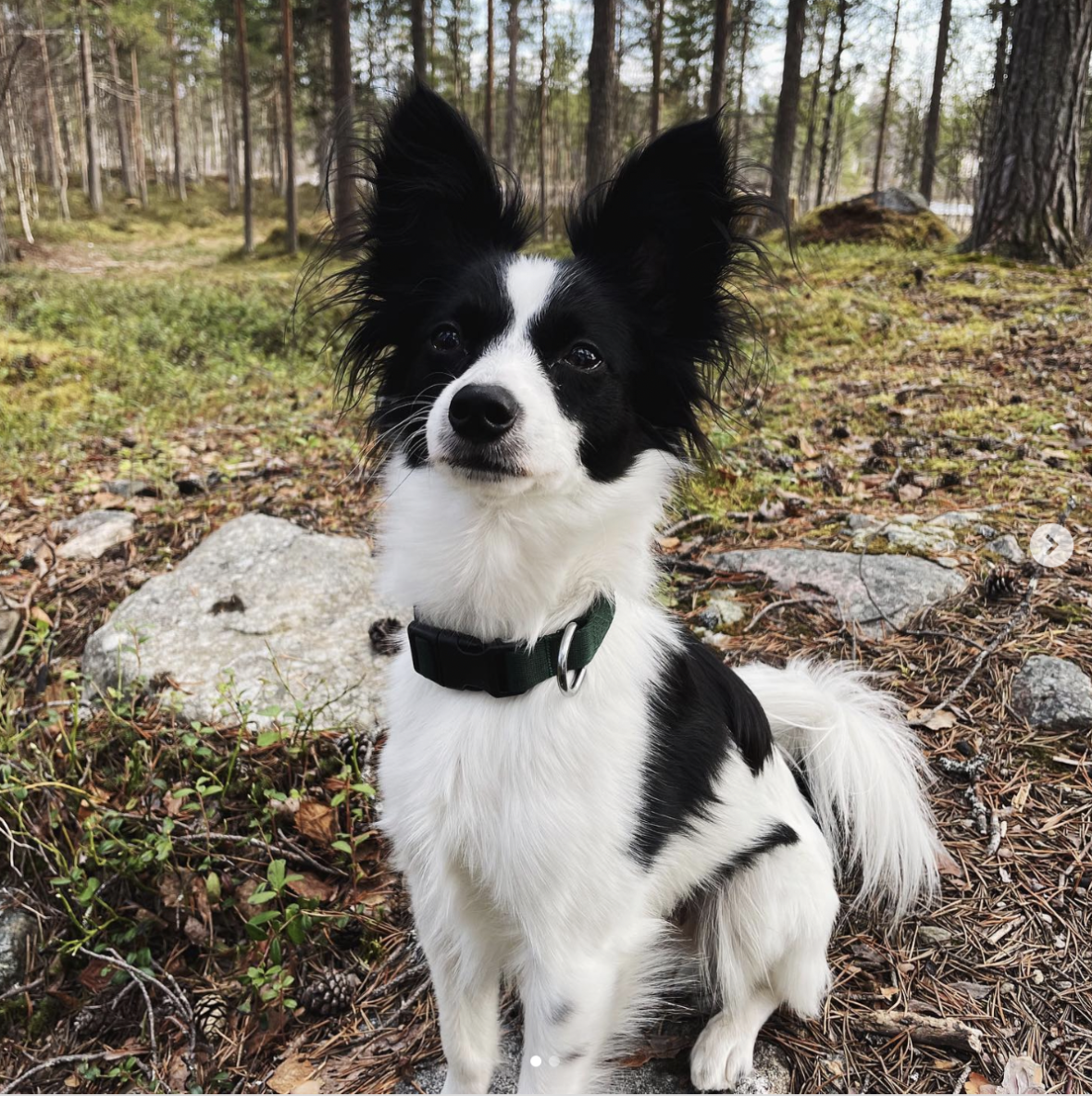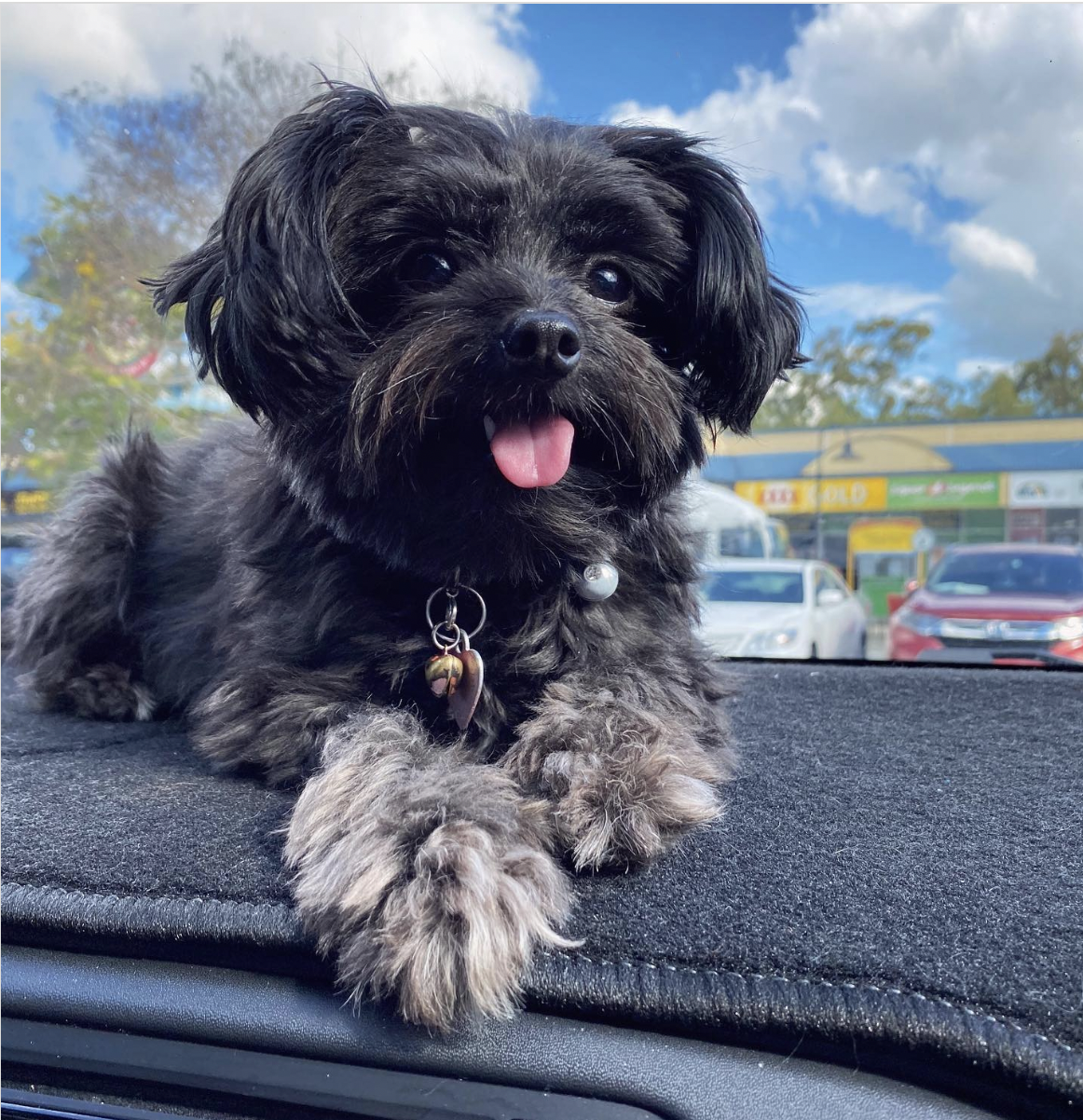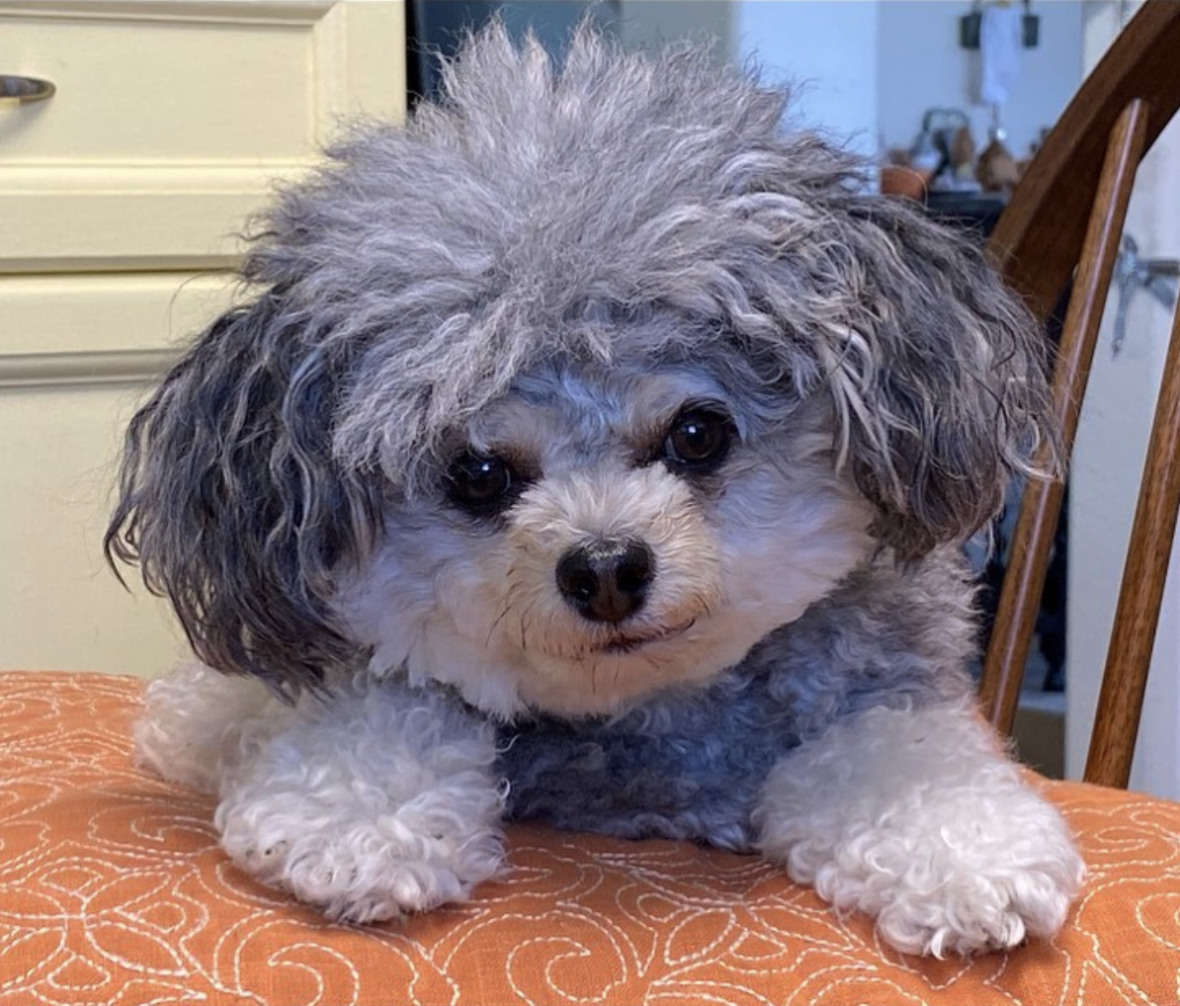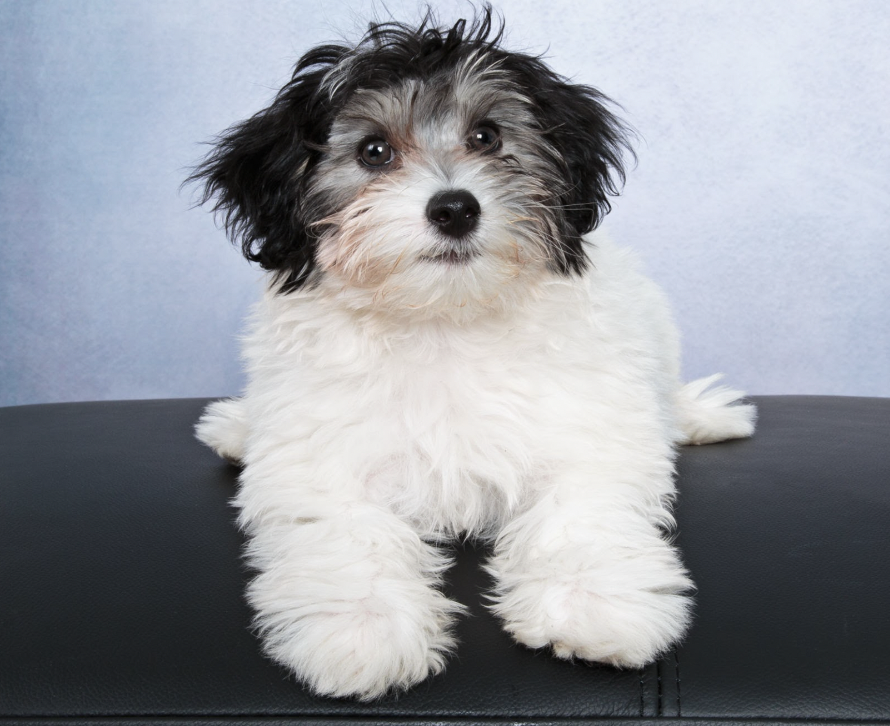The Papipoo Phenomenon: Discover the Irresistible Charm of the Papillon-Poodle Mix

The world of dog breeds is constantly evolving, and one breed that has been garnering attention in recent years is the Papipoo. A delightful designer dog breed, the Papipoo is a cross between the spirited Poodle and the loyal Papillon. This unique blend of two distinct breeds results in a dog that possesses an array of desirable traits, making it an attractive choice for prospective owners seeking a loving and playful companion.
In this article, we will delve into the world of Papioos, exploring their size, lifespan, hypoallergenic qualities, health conditions, shedding tendencies, and popularity. We will also provide answers to some frequently asked questions to assist potential owners in making an informed decision about this charming breed.
First let’s meet some Papipoos from Instagram
1. Enzo The Papipoo

Enzo is a handsome 10 month old Papipoo from Northern Sweden. Some of his favorite things to do is chew on stuff, sleep and meet people and give them lots of kisses
2. Chloe The Papipoo

Beautiful Chloe is a Papipoo from Brisbane, Australia! One of her favorite things to do is to steal Socks.
3. Oliver The Papipoo

Oliver is another cute and handsome Papipoo on social media that is living his best life.
Size and Appearance
Papipoos typically fall into the small to medium size range, reflecting their Poodle and Papillon parentage. On average, they stand between 10 and 12 inches tall at the shoulder and weigh between 7 and 12 pounds. However, it’s worth noting that due to the genetic diversity within the breed, there can be some variations in size and weight among individual Papipoos.
In terms of their appearance, Papipoos inherit a mix of characteristics from both parent breeds. They often have the distinctive butterfly-like ears of the Papillon and the curly or wavy coat of the Poodle. Their coat can come in a variety of colors, including white, black, brown, or a combination of these shades. Their expressive eyes and intelligent facial expression further enhance their overall appeal.
Lifespan and Health
The average lifespan of a Papipoo ranges between 12 and 15 years, which is relatively consistent with other small to medium-sized dog breeds. However, it’s important to remember that individual dogs may have different lifespans depending on factors such as genetics, overall health, and quality of care.
While Papipoos are generally considered healthy dogs, like any breed, they may be prone to certain health conditions. It is crucial for potential owners to be aware of these conditions to ensure they can provide appropriate care and regular veterinary check-ups. Some common health issues that Papipoos may experience include dental problems, patellar luxation (kneecap displacement), and progressive retinal atrophy (a degenerative eye condition). Regular exercise, a balanced diet, and routine vet visits can help mitigate these concerns and promote a long and healthy life for your Papipoo.
Hypoallergenic Qualities and Shedding

One significant advantage of the Papipoo breed is its hypoallergenic qualities. Thanks to their Poodle heritage, Papipoos often have a low-shedding and hypoallergenic coat. This means that they produce fewer allergens and are less likely to cause allergic reactions in individuals who are sensitive to dog dander.
It’s important to note that while Papipoos are generally considered hypoallergenic, the extent of their hypoallergenic qualities can vary from dog to dog. Some individuals may still produce minimal allergens, while others may be even more hypoallergenic. If you or a family member have allergies, it’s recommended to spend time with a Papioo before making a commitment to ensure compatibility and to consult with an allergist if necessary.
Popularity and Demand
In recent years, the Papipoo has experienced a surge in popularity, both as a family companion and a trendy designer breed. Their endearing appearance, combined with their affectionate and playful nature, has captured the hearts of many dog enthusiasts. As with any popular breed, it’s essential for prospective owners to exercise caution and ensure that the Papipoo is the right fit for their lifestyle and family.
While demand for Papipoos has increased, it’s important to approach the selection process responsibly. Reputable breeders who prioritize the health and well-being of their dogs should be sought out. It’s advisable to research and connect with established breeders who adhere to ethical breeding practices, ensure proper socialization of puppies, and offer health guarantees.
In conclusion, the Papipoo is a captivating designer dog breed that combines the best qualities of the Poodle and the Papillon. Their small size, hypoallergenic qualities, and affectionate nature make them an attractive choice for many potential owners. However, it’s crucial to consider their exercise needs, health conditions, and grooming requirements before bringing a Papioo into your home. Responsible ownership, including proper care, training, and socialization, is key to ensuring a happy and fulfilling life for your Papipoo companion.
FAQs about Papipoos
Are Papipoos suitable for families with children?
Yes, Papipoos can be great companions for families with children. They are generally friendly, playful, and adaptable, making them well-suited for households with kids. However, it’s crucial to teach children how to interact with dogs properly and supervise their interactions to ensure the safety and well-being of both the children and the dog.
Do Papipoos require a lot of exercise?
While Papipoos have moderate exercise requirements, they still need regular physical activity to stay healthy and mentally stimulated. Daily walks, play sessions, and interactive toys are recommended to meet their exercise needs. Keep in mind that individual Papipoos may have varying energy levels, so it’s essential to gauge their exercise requirements based on their age, health, and disposition.
Are Papipoos easy to train?
Yes, Papipoos are generally intelligent and eager to please, which can make them relatively easy to train. With consistent positive reinforcement techniques, they can quickly grasp commands and learn new tricks. Early socialization and puppy training classes are also recommended to ensure they grow into well-rounded and obedient dogs.
Can Papipoos live in apartments or smaller living spaces?
Yes, Papipoos can adapt well to apartment living or smaller living spaces. Their small size and moderate exercise needs make them suitable for such environments. However, it’s crucial to provide them with regular exercise and mental stimulation to prevent boredom and ensure their overall well-being.
How much grooming do Papipoos require?
Papipoos have a coat that can vary in length and texture, depending on the specific traits inherited from their parent breeds. Regular brushing is necessary to prevent matting and keep their coat in good condition. Some owners prefer to keep their Papipoos in a shorter trim, while others prefer a longer, more elaborate style. Additionally, regular grooming, including nail trims and teeth brushing, is important for their overall health and hygiene.
Where can I find Papipoo puppies for adoption?
Papipoo puppies can be found through various sources. You may consider checking local animal shelters, rescue organizations, or reputable breeders specializing in Papipoo or Papillon Poodle mix breeds. Online platforms and classified advertisements can also provide leads, but it’s crucial to do thorough research and ensure the legitimacy and ethical practices of the seller or rescue group.
Can Papipoos mate with other Papipoos?
Papipoo puppies can be found through various sources. You may consider checking local animal shelters, rescue organizations, or reputable breeders specializing in Papipoo or Papillon Poodle mix breeds. Online platforms and classified advertisements can also provide leads, but it’s crucial to do thorough research and ensure the legitimacy and ethical practices of the seller or rescue group.
How big do Papipoos get when fully grown?
The size of a fully grown Papipoo can vary depending on the specific traits inherited from their Papillon and Poodle parents. On average, most Papipoos reach a height of 10 to 12 inches at the shoulder and weigh between 7 to 12 pounds. However, individual dogs may fall outside of this range due to genetic variations.
What is a Papi-poo?
A Papi-poo is another term used to refer to the Papillon Poodle mix, or Papipoo. The name “Papi-poo” is derived from combining parts of the breed names, highlighting the Papillon and Poodle parentage. It is essentially an alternate name for the same designer dog breed, characterized by their small size, playful temperament, and often hypoallergenic qualities.
Are Papipoos good for families with allergies?
Yes, Papipoos can be a suitable choice for families with allergies. Due to their Poodle heritage, many Papipoos have low-shedding and hypoallergenic coats. While no dog breed can be guaranteed to be completely hypoallergenic, Papipoos are often a better option for individuals with allergies compared to breeds that shed heavily. However, it’s important to spend time with a Papipoo to assess individual sensitivity and consider consulting with an allergist before making a final decision.



